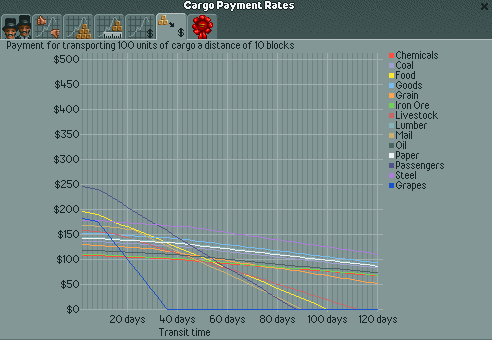Part 1: Industry information and cargo rates
ultrabindu posted:
How does this game stack up against OpenTTD?
I remember playing this for a while back when it first came out, but not really getting into it very much. Growing the towns into cities and making intricate tram lines was fun though.
I've never played OpenTTD but I played the versions of TTD (And the original Transport Tycoon) with the fan patches. The graphics are upgraded a great deal, from pixel art style sprites to renders of 3d models. Depots are gone (Actually a really good move) in favour of placing things directly on the track. Lots of the fan patch functionality was incorporated, like multiple engine trains, with no length limit, but signals mechanics remain unchanged. I feel vehicle selection could have been more creative. (Why no service cars, water taxis or Rotodyne?)
Poil posted:
I remember building tracks to be horrible and wearing out my mouse left click like nobody's business. Especially trying to build two tracks alongside each other like a proper train system. In OpenTT you just click and drag but here you have to manually click each piece?
Supeerme posted:
Shit I remember playing the Demo of this. No wonder I couldn't find it in the stores.
Let's have a look at how we make some
 . You get paid for taking stuff from where it's produced to where it's wanted. Your payment is basically the amount of cargo hauled times the distance carried. This is then modified by a rate based on the cargo type and the time it took to get there.
. You get paid for taking stuff from where it's produced to where it's wanted. Your payment is basically the amount of cargo hauled times the distance carried. This is then modified by a rate based on the cargo type and the time it took to get there.Passengers and Mail:
Passengers are produced by all town buildings. Large ones also produce mail. Any station put within 4 squares of a building will receive a small stream of passengers from it that can be picked up by passenger vehicles. However, to deliver them, you need to take them to a place that will accept them. You can see that the big building below only accepts a fractional amount of passengers, so to get a workable station, you need to put it near multiple buildings that add up to more than one 'passenger'. You can also see that the building accepts small amounts of other cargoes so if there's enough buildings around, a station near the center of town will be a good place to deliver mail, food and goods to. Once the station accepts a type of cargo, you can deliver as much of it as you like.
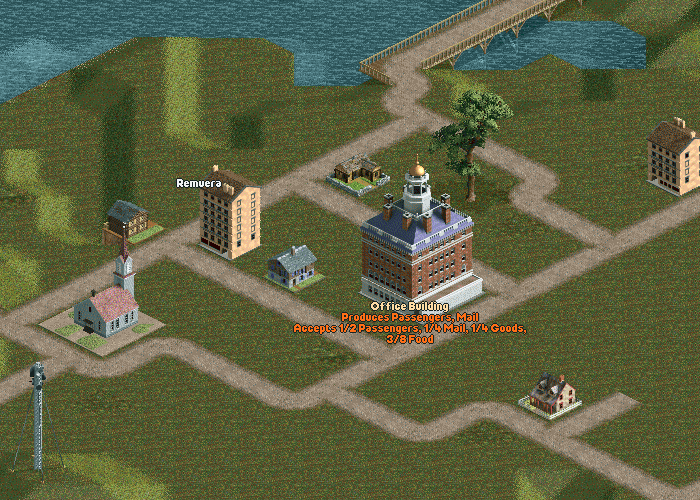
Unfortunately, many of the towns in our region are more like this
 :
: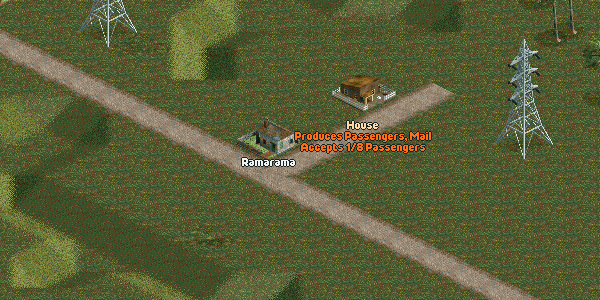
We'll need to wait for them to grow before they are usable passenger options. Passengers pay well if they are carried fast but the pay rate drops off rapidly if they are delayed. Mail has a similar pattern but at a lower rate, so it's usually only a sideline.
Farm based:
There are a few kinds of Farm. Some produce Livestock that can be taken to a food processing plant. Livestock have a low pay rate with a slow tail off. Livestock is usually carried in a special type of carrier.
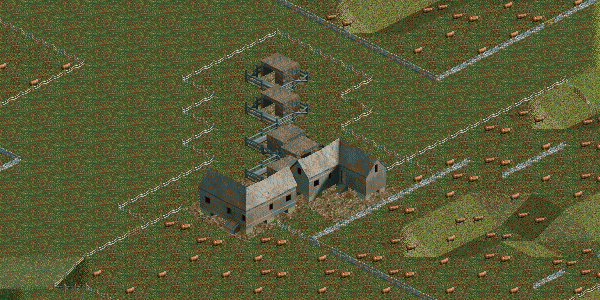
Grain farms can deliver to a food processing plant, but can also deliver to a brewery. Grain pays and tails off ever so slightly more than livestock. Grain is carried in hopper trucks, bulk ships or covered hopper rail wagons.
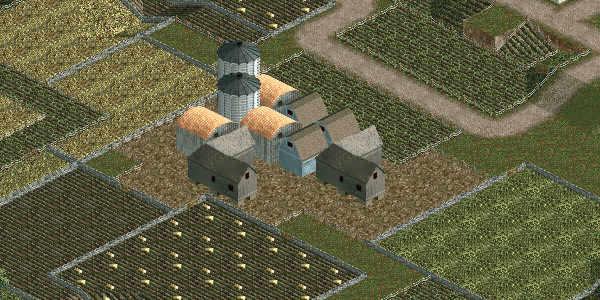
Food plant:
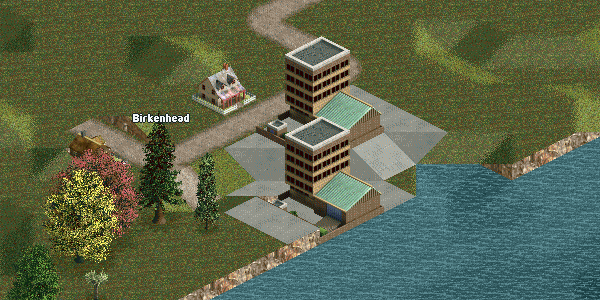
Brewery:
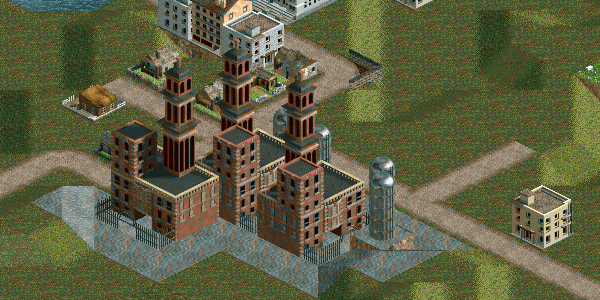
When the produce arrives at the processors or breweries, they produce food that can be taken to towns that have enough food receiving buildings.
Vineyards produce grapes that go to Wineries to produce food. Grapes pay a little less than mail and tail off to nothing very rapidly.They are carried in general goods vehicles or boxcars.
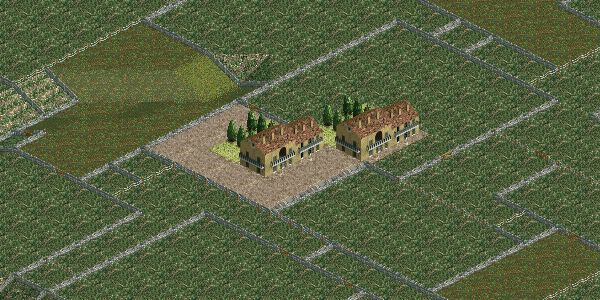
Winery:
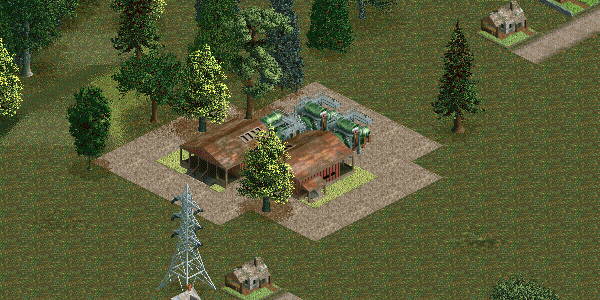
All farms tend to produce relatively small amounts of goods, and tend to close down if the fields around them are eaten up by developments
Mining based:
Coal mines produce coal that is carried in hoppers. They tend to cluster in a few areas of the map. Coal pays fairly well for a non-perishable good. Well serviced coal mines will often increase production.
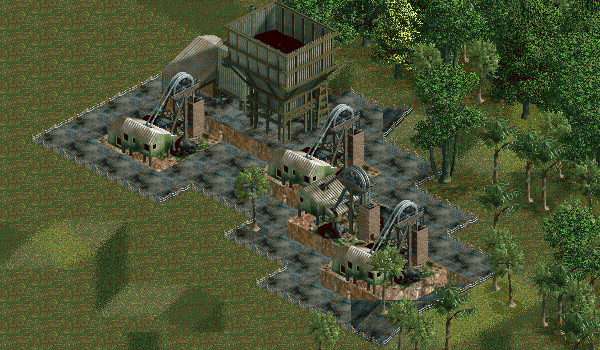
Iron mines are like coal, but pay a significantly lower rate.
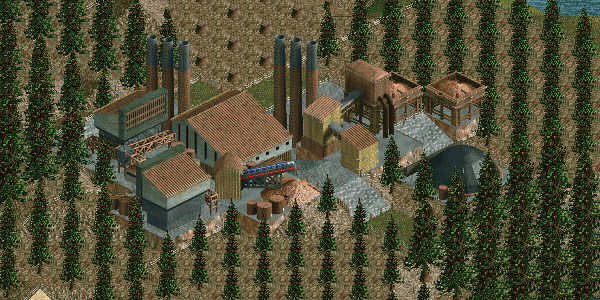
Both iron and coal get transported to a steel mill. (Coal can also go to power stations that produce nothing, but there are none on our map) If a steel-mill gets regular supplies of coal and iron, it will produce steel, which is carried on flatbeds and pays very well.
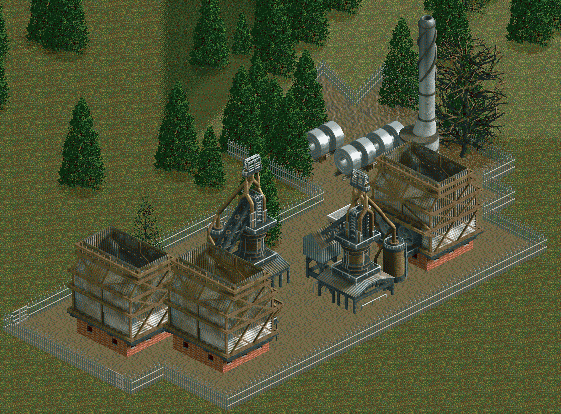
Steel is transported to factories, which then produce goods that are accepted by office buildings and shops. Goods are carried in general cargo vehicles and boxcars and pay more than coal but less than steel.
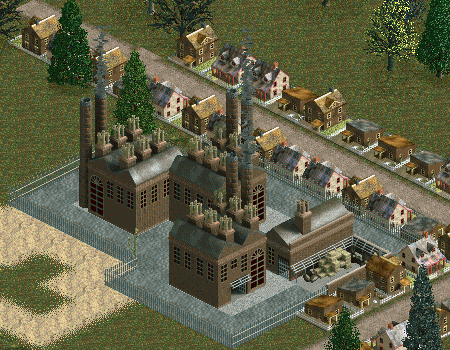
Plantation forest ('Managed forest' in-game) supplies lumber in similar quantities to the farms. Lumber pays about the same as coal.
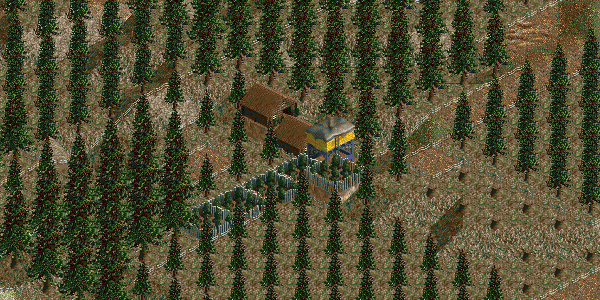
Lumber can be taken directly to a sawmill to produce goods:
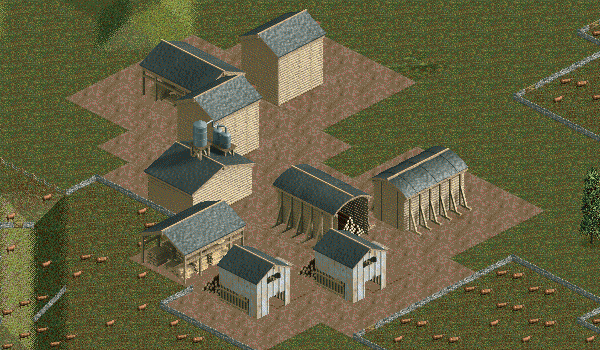
Or to a paper mill to produce paper, which pays less than goods but more than coal. Paper is carried on flatbeds to the printing works to produce goods.
Paper mill:
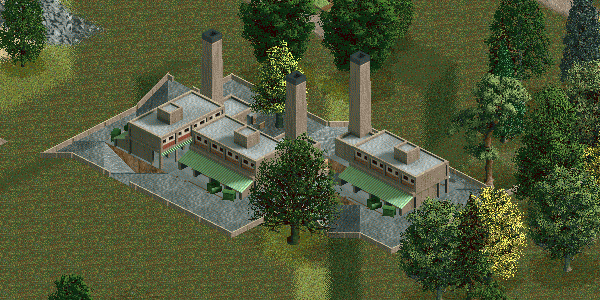
Printing works:
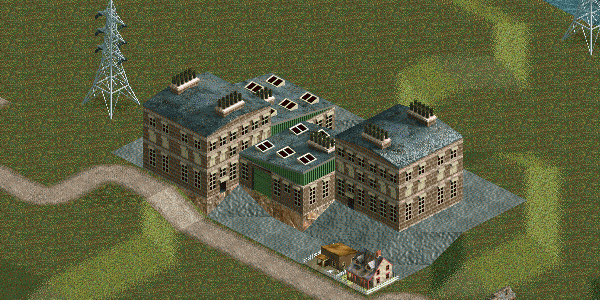
Other
Oil is a common commodity that isn't on this map. It pays well, is produced in large amounts and is carried in tanker cars from oil wells (land and sea) to oil refineries:
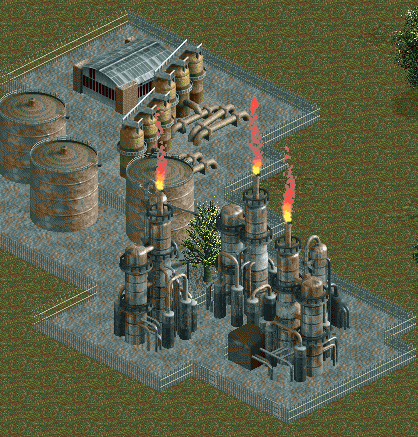
Chemicals are also missing from this map (You can only have so many industries in a scenario). They pay lousy but in bulk, and ship in tankers directly to factories. Flour mills work with the same cargoes as breweries, and Ski fields that accept and produce passengers are also available.

Finally, here's a reference to the payment rates. They stay the same relative to each other, but the prices go up over time due to inflation.
